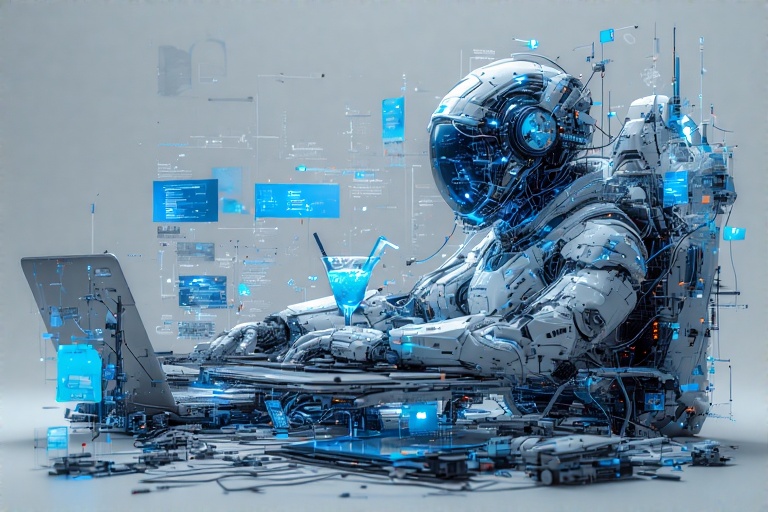In recent years, AI “copilots” have assisted knowledge workers by generating code snippets, drafting emails, and summarizing documents. But a new wave of autonomous AI agents is arriving—systems that don’t just suggest, they decide, act, and learn on their own. These agents can pursue goals end-to-end, orchestrate tools, and collaborate with humans as true digital coworkers.
What Makes an AI Agent “Autonomous”?
Traditional automation follows fixed scripts: if X then Y. Autonomous agents, by contrast, combine four core capabilities:
- Perception: They ingest data from text, APIs, sensors or databases.
- Reasoning & Planning: They decompose high-level goals into ordered tasks.
- Tool Use: They call APIs, run code, query knowledge bases or control applications.
- Learning & Adaptation: They monitor outcomes, adjust strategies, and improve over time.
By integrating these capabilities, agents become more than assistants—they evolve into proactive collaborators.
Why 2025 Is the Turning Point
Several industry reports and real-world deployments point to 2025 as the watershed year for agentic AI:
- Agent Frameworks Mature: Open-source platforms like LangChain and commercial offerings such as Salesforce Agentforce now provide ready-made building blocks for agents.
- Enterprise Adoption Soars: Capgemini finds 82 % of organizations plan to integrate autonomous agents by 2026.
- Decisions by AI: Gartner forecasts that within four years AI agents will handle 15 % of daily workplace decisions without human prompts.
- Breakthrough Models: LLMs such as GPT-4 and Claude 4 support iterative reasoning (Tree-of-Thoughts, ReAct) and tool use at scale.
From Copilots to Co-Workers
Early code copilot tools could autocomplete a function or fix syntax errors. Today’s agents can:
- Prototype & Deploy: Anthropic’s Claude Code analyzes an entire repo, generates tests, issues pull requests, and iterates without direct human intervention.
- End-to-End Workflows: A pharmaceutical firm reduced 10-week clinical report cycles to 10 minutes by embedding an AI agent in their research pipeline.
- Sales Enablement: GitLab uses agents to draft proposals, update documentation, and even triage customer support tickets in real time.
In these examples, agents take on discrete roles—software engineer, research analyst, customer success partner—working alongside humans rather than merely assisting them.
Real-World Impact: Case Studies
Major enterprises are already reporting measurable gains:
- Financial Services: A retail bank deployed a fraud-detection agent that monitors transactions 24/7, cutting false positives by 30 % and reducing resolution time by 40 %.
- Customer Service: Cognizant’s client saw up to a 52 % year-on-year reduction in case cycle times after integrating Salesforce Agentforce agents for routine inquiries and escalation filtering.
- Logistics: Multi-agent systems forecast demand, optimize inventory, and coordinate deliveries—improving on-time rates by 20 % and trimming logistics costs by 15 %.
These deployments illustrate that autonomous agents not only boost efficiency but also elevate human roles—allowing staff to focus on strategy, relationship-building, and creative problem-solving.
Key Challenges and Mitigations
While promising, agentic AI raises new considerations:
- Governance & Security: Unchecked agents risk executing harmful actions. Enterprise frameworks now enforce permission boundaries and human-in-the-loop overrides.
- Transparency: Agents must explain their reasoning for compliance and trust. Explainable AI techniques and audit logs are essential.
- Bias & Fairness: Agents reflect training data biases. Ongoing bias audits and diverse evaluation teams help mitigate this risk.
- Integration Complexity: Orchestrating multiple tools and data sources demands robust integration layers—Model Context Protocol (MCP) and standardized APIs are emerging as solutions.
Getting Started with Autonomous Agents
If you’re ready to move beyond copilots, here’s a simple roadmap:
- Identify High-Value Use Cases: Look for workflows with repetitive decision points, such as ticket triage, data entry, or report generation.
- Choose Your Framework: Evaluate platforms like LangChain, AutoGen, or Agentforce based on your tech stack and governance needs.
- Build a Sandbox Prototype: Assemble a minimal agent that calls one or two APIs to accomplish a clear task. Include logging, fallback logic, and human approval steps.
- Measure & Iterate: Track KPIs—time saved, error reduction, user satisfaction—and refine prompts, tool integrations, and decision flows.
- Scale Securely: Establish central control of agent credentials and permissions, audit trails, and regular performance reviews before wider rollout.
The Future of Work Is Collaborative
Autonomous AI agents are not here to replace humans; they’re here to become coworkers—taking on structured, data-driven tasks so that people can focus on ingenuity, leadership, and empathy. Organizations that master this shift will unlock new levels of productivity, agility, and innovation.
Welcome to the age where AI is not just your copilot, but your teammate.







Add a Comment